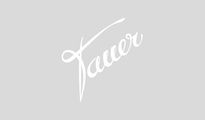

notes on birch tar
OK. Birch tar. That’s an easy one. If you wish to find out how birch tar smells: Hit the next birch tree, cut it, light a fire, let the fire go out, smell the smoke and you get the idea. Of course, what I used has been rectified a few times to get rid of toxic stuff. Alternatively, you might want to smell Lonestar Memories, my third fragrance, where I sort of went to the limit of what you do with birchtar in perfumery. You may also visit Knize Ten, the original, one of the best leather scents there is and discover birch tar there, packed nicely into a chord of citrus and a yummie rose and geranium and lots of woods, just to name one of my favorite leather scents.
Actually, birch tar is not an easy one to use. It is smoky, burnt wood like, leathery, somewhat dirty, phenolic, not really pleasant when smelled in high concentrations. A little drop changes everything in a mixture. You find this drop in the air du désert marocain, too. In the scent that I am talking about about since Monday I dosed the birch tar a bit higher than in air du désert marocain. The leathery, smoky line is more present but much less than in Lonestar Memories. It basically contrasts any gourmand aspect of cocoa. I wanted to add a leathery burnt dry wood note to the cocoa and bring out the animalic underlining story within the scent’s head and heart note.
Today’s picture shows you three aluminum bottles, from left to right the already discussed beeswax, a little aluminum tube with Bourbon vetiver and birch tar. Vetiver and birch tar go wonderful together and work sort of hand in hand. Actually, vetiver is much more smoky and dirty leathery tobacco than you would expect. Most vetiver fragrances that we see these days on the perfumery shelves are cleaned to a point where the soul of vetiver is actually gone. However, I do not need a lot of vetiver here, just a hint to fix things, add volume and a bit earth.
You also see the formula, printed from excel (and gloves, as I always mix with gloves on). The right side column of the excel is actually empty and there I fill in the lot numbers of each ingredient. Later, I transfer the numbers into the Excel file again. Each raw material that I use comes with a certificate of analysis and with a specific batch number. The mixture that I make will also get a batch /lot number. Thus, I can basically trace back for every lot of every fragrance that I ever made which ingredients of what batch with what specifications I actually used. Right now, I have three large folders filled up with certificates.
One fine day, 10 years after production, I am allowed to destroy the certificates. They will burn and hopefully smell smoky and dirty.
